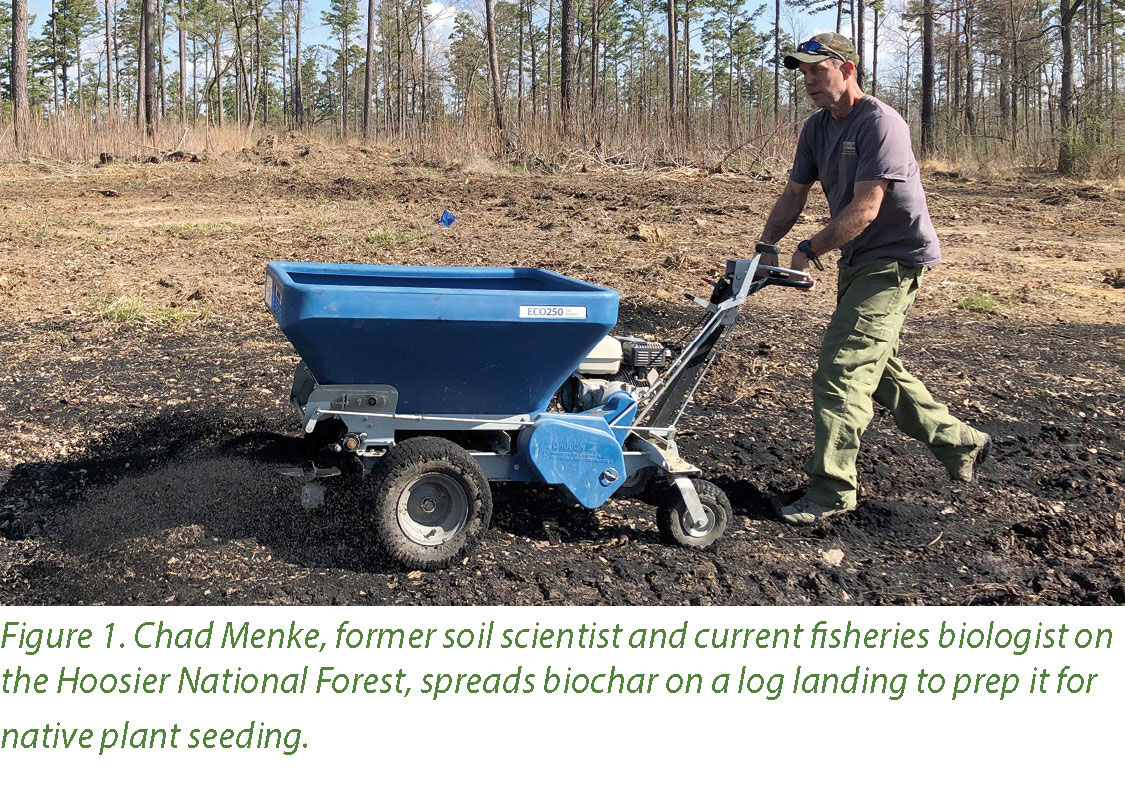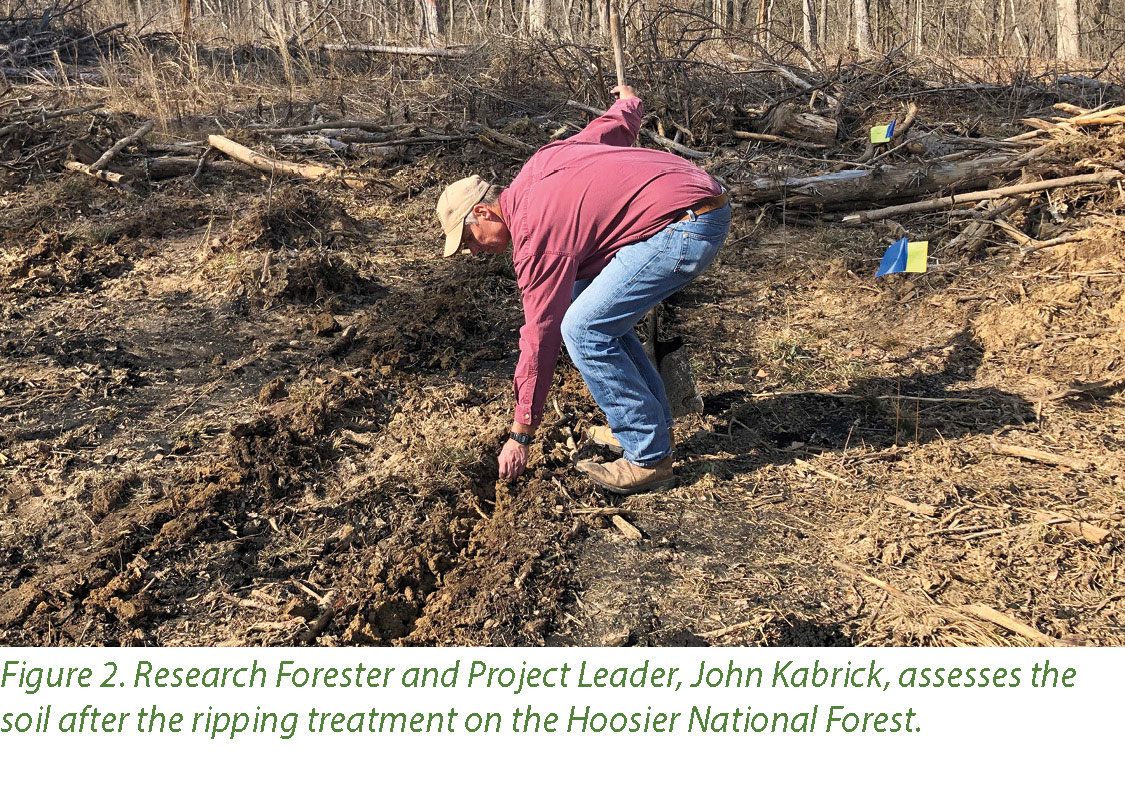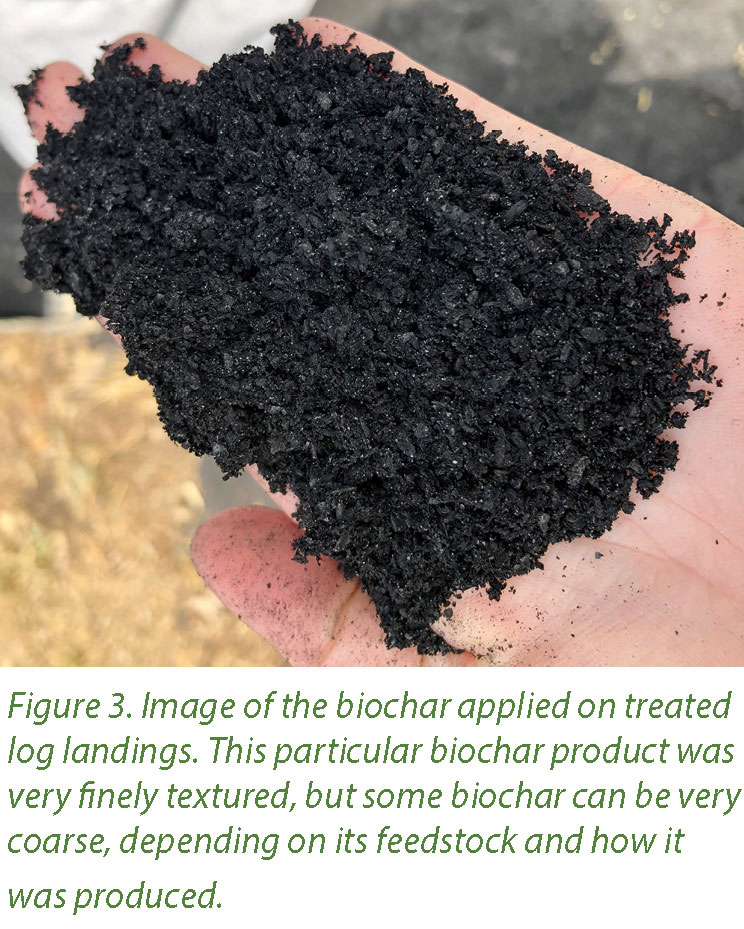The PHiLL Project: A Collaboration of Forest Managers and Researchers to Restore Soils for Pollinator Benefits
Decline of native bees and how enriched log landings and increase habitat.
Native bees are among the most diverse and important pollinators of our forested ecosystems with approximately 4,000 different species in North America. Currently, populations of bees are declining world-wide. A primary driver of bee declines in the eastern and midwestern US is habitat loss, including the loss of open forest habitats with understories of rich floral nectar and nesting resources. Semi-natural habitats such as enriched roadsides and log landings may help to provide the resources needed to sustain bee populations and their important ecosystem service: pollination.
Overview of active forest management and log landings
Log landings, open areas in forests where logs are processed and stacked before being loaded onto logging trucks, are challenged with soil compaction, erosion, residual mulch, logging debris, and invasive species. While landings consolidate the impacts of timber equipment in small, centralized locations, they have little natural regeneration of vegetation afterwards due to the disturbance to the soil surface and the loss of soil structure caused by equipment traffic. To minimize additional impacts across the landscape in the future, these landings are often reused. Although these sites are challenged by the consequences of active forest management, they provide opportunities that may not exist otherwise to increase the availability and abundance of floral and nesting resources for native bees. However, the first step to enriching log landings for pollinators is assessing the degree of soil compaction and mitigating its impact to plant establishment.
Soil compaction as a barrier to plant establishment
The use of heavy machinery for forest operations can result in areas of high soil compaction locally, depending on soil texture and its degree of wetness. For example, southern Indiana forest soils are often silty in texture, and if wet, are highly susceptible to compaction. For this reason, harvesting is ceased when conditions favoring soil compaction are likely. Soil bulk density is closely related to soil compaction and refers to the mass of soil per unit volume. As soils become more compacted, their bulk densities increase as pore space decreases. High bulk densities can impact root growth, water infiltration and storage, gas exchange, and soil health leading to limited native plant establishment and growth. Compacted soils may rebound with time, but with significant compaction, it may take decades to return to similar levels in the neighboring forest. Depending on the degree and depth of the compaction, soil treatments that mitigate the localized impacts of heavy machinery and log decks may be required. Subsoiling or ripping is a common way to reduce soil compaction with minimal disruption of the soil profile. Ripping loosens the soil but otherwise maintains the integrity of soil profile unlike plowing or discing which turns and mixes the soil layers. 
The creation of the PHiLL project
After learning about pollinator declines, a Hoosier National Forest (HNF) forester asked if log landings could be restored for pollinator habitat. He organized other HNF employees to experiment with different ways to reduce compaction from heavy equipment and establish native vegetation. They tried several methods but were unable to identify a consistent method. The forester, botanist and soil scientist reached out to other National Forest specialists and Northern Research Station scientists to compare issues across the central hardwood region. The discussions resulted in collaborative research initiative called the PHiLL (Pollinator Habitat in Log Landings) project to investigate the establishment of ephemeral pollinator habitat across three National Forests: Hoosier (IN), Shawnee (IL) and Mark Twain (MO).
The PHiLL experiment
Improving soil conditions was a primary objective for the PHILL project. To reduce soil compaction and increase fertility the team of managers and researchers proposed three approaches: 1) ripping compacted soil, 2) ripping compacted soil and adding biochar, and 3) adding biochar without ripping (Figure 1). Ripping in this case was done using 20-inch tines pulled through the soil with a skidsteer (Figure 2). Each National Forest selected five landings to receive treatments, and five landings left to revegetate naturally as controls. Within the soil treatment areas there was a split-plot application of seeding: seeded and not seeded. The seed mix included thirty-one native, generalist plant species adapted to a wide range of site conditions. This was to test whether active seeding increased plant regeneration, biomass and pollinator habitat compared to leaving the area regenerate naturally from surrounding vegetation.
 The goal of the PHiLL experiment was to monitor all landings and collect data that could be analyzed to compare the different treatments and produce a management guide for each Forest including the best management practices (BMPs) for establishing pollinator habitat in log landings. Results of this research will also be shared with other forest managers and landowners to describe restoration practices on soils, vegetation and pollinators. It will also result in two master’s theses, one PhD dissertation and several peer-reviewed publications.
The goal of the PHiLL experiment was to monitor all landings and collect data that could be analyzed to compare the different treatments and produce a management guide for each Forest including the best management practices (BMPs) for establishing pollinator habitat in log landings. Results of this research will also be shared with other forest managers and landowners to describe restoration practices on soils, vegetation and pollinators. It will also result in two master’s theses, one PhD dissertation and several peer-reviewed publications.
What is biochar? Why would we use it for forest soils?
The PHiLL team decided to experiment with the use of biochar to improve soil conditions for native plant establishment because it has high nutrient exchange and water holding capacity (Figure 3). Additionally, it is highly persistent in the soil resulting in long-term carbon storage. Biochar is created by heating carbon rich feedstocks (such as wood debris) in the absence of oxygen. It can either be purchased or it can easily be made onsite. However, the resulting characteristics of the biochar will be dependent on the feedstock used and the temperature it was pyrolyzed at. A biochar was purchased from one distributor and used on all three Forests for consistency.
What we have learned from our soil mitigation treatments (ripping and biochar)
 Implementation of the experiment began in winter 2021 with soil ripping, biochar application and seeding according to the experimental design. Data has been collected on the study sites from 2021 to 2023. Soil data included collecting samples to measure soil compaction, estimates of total and active carbon stocks, pH, cation exchange capacity (soil nutrient holding ability) and the concentration of nitrogen, phosphorus, and other nutrients. Preliminary analysis shows a significant decrease in compaction across all treatments and landings in the upper surface of the soil, with a greater decrease occurring where the biochar was applied with or without ripping. However, at greater depths, soil compaction remains. These results indicate that the application of biochar, particularly along with ripping, can mitigate surface compaction more quickly than leaving the soil untreated.
Implementation of the experiment began in winter 2021 with soil ripping, biochar application and seeding according to the experimental design. Data has been collected on the study sites from 2021 to 2023. Soil data included collecting samples to measure soil compaction, estimates of total and active carbon stocks, pH, cation exchange capacity (soil nutrient holding ability) and the concentration of nitrogen, phosphorus, and other nutrients. Preliminary analysis shows a significant decrease in compaction across all treatments and landings in the upper surface of the soil, with a greater decrease occurring where the biochar was applied with or without ripping. However, at greater depths, soil compaction remains. These results indicate that the application of biochar, particularly along with ripping, can mitigate surface compaction more quickly than leaving the soil untreated.
Cheryl Coon, Forest Botanist, Hoosier National Forest.
Lauren Pile Knapp, Research Ecologist with the USDA Forest Service, Northern Research Station.
John Kabrick, Research Forester and Project Leader, with USDA Forest Service, Northern Research Station.
